
Art | Resources
Mighty No Bitey
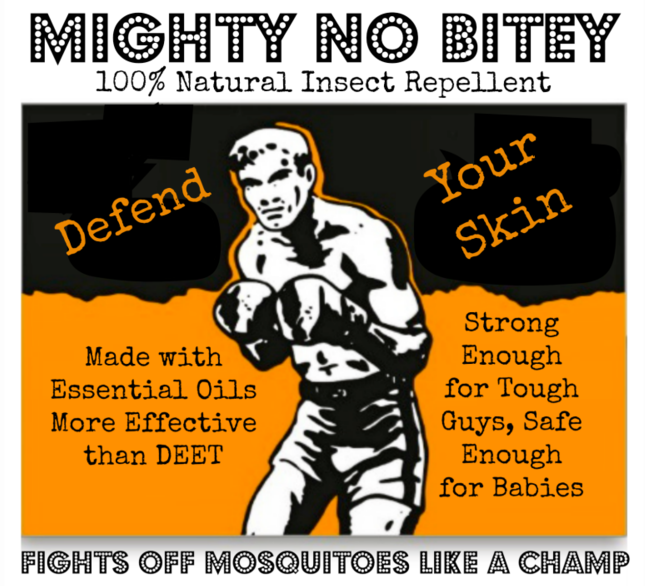 100% organic, non-GMO insect repellent. “The premium natural bug spray that works like a champ!…Reoela mosquitoes, ticks, chiggers and many other biting, stinging insects…Strong enough for tough guys but safe enough for babies…entirely free of all chemicals…contains 7 steam-distilled essential oils and finest non-GMO vegan bases, each of which has added skin benefits and won’t promote sunburn.
100% organic, non-GMO insect repellent. “The premium natural bug spray that works like a champ!…Reoela mosquitoes, ticks, chiggers and many other biting, stinging insects…Strong enough for tough guys but safe enough for babies…entirely free of all chemicals…contains 7 steam-distilled essential oils and finest non-GMO vegan bases, each of which has added skin benefits and won’t promote sunburn.
Murphy’s Naturals
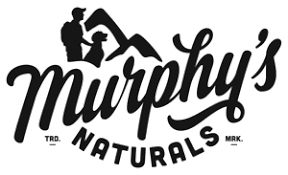 All-natural (but not organic) insect repellent spray made from Oil of Lemon Eucalyptus — “the only plant based ingredient recommended by the Centers for Disease Control and Prevention (CDC). Repels mosquitoes & insects for up to 6 hours: Repels mosquitoes that may transmit Zika virus, West Nile virus, Dengue virus & Chicungunya virus.” Also insect repellent incense sticks and candles.
All-natural (but not organic) insect repellent spray made from Oil of Lemon Eucalyptus — “the only plant based ingredient recommended by the Centers for Disease Control and Prevention (CDC). Repels mosquitoes & insects for up to 6 hours: Repels mosquitoes that may transmit Zika virus, West Nile virus, Dengue virus & Chicungunya virus.” Also insect repellent incense sticks and candles.
A Pretty Comprehensive Overview of Nail Polish—Both Bad and Better
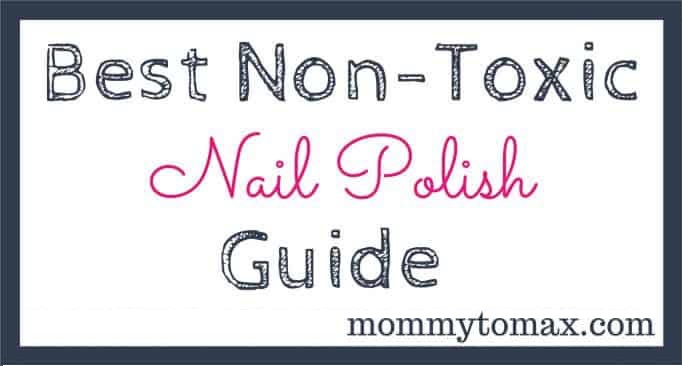
Last week I received an email from a “nontoxic mommy blogger” asking if I would take a look at her upcoming post about nail polish.
I was impressed with her thorough research into the toxic chemicals used in nail polish and her review of the safer brands.
What I didn’t agree with was I felt that she didn’t give enough emphasis to the fact that even the “safe” brands aren’t really safe.
And you know what? She edited her post to include my viewpoint.
I’m really pleased she reached out to me and hope others will too. I’m happy to discuss and review because I want accurate information out in the world.
I’m very happy to see there is a new generation of nontoxic writers coming up who can continue to carry the torch when I’m ready to pass it on.
This is a great piece on nail polish. Well done, Lotus!
Cotton Compression Hose
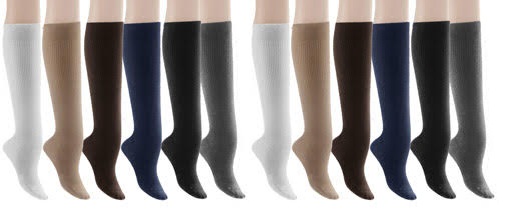
Question from Bonnie Johnson
Hi Debra,
I was just told by my cardiologist that I need to start wearing compression hose to help with a heart issue. Are there any safe ones? Cotton? I have seen some but they are nylon and spandex. Not sure what to do.
Debra’s Answer
There IS cotton compression hose. Here’s one example:
http://www.foryourlegs.com/Sigvaris-151C-Sea-Island-Cotton-15-20-mmHg-Womens-Knee-Highs-p-17688.html
There are also cotton hose liners specifically to wear inside compression hose for comfort.
https://www.brightlifedirect.com/biacare-cotton-liners.asp
They are easy to find online
Just search on “cotton compression hose and websites will come up that sell both.
Can There Be Such A Thing As Nontoxic Nail Polish?
 My guest today is Ginny Cardenas, CEO and founder of Lila Natural Cosmetics, the makers of Scotch Naturals and Hopscotch Kids nail polishes. I met Ginny last month in Baltimore at the Natural Products Expo. We had a rousing discussion about nail polish and how I couldn’t find one I thought was nontoxic enough to recommend. She made some interesting points I want to share with you. Ginny has always valued the importance of safe, yet effective, cosmetics. In 2009, when she took a closer look at the chemical cocktail of ingredients in her daughters’ nail polish—including phthalates, acetates and other toxics—she was shocked. Determined to create a natural and safe alternative to conventional nail polish, she teamed up with a chemist to develop revolutionary water-based lacquers in fun, vibrant colors and a soy-based polish remover. And thus, Hopscotch Kids was born. In 2010, Ginny unveiled Scotch Naturals, the grown-up spin-off of Hopscotch Kids, which caters to an adult demographic with a sophisticated color palette and professional quality results. Passionate about using only the safest and natural ingredients in her products, Cardenas has been at the forefront of natural formulation with innovative technology and bold, fashion-forward colors since the company’s inception. Today, both brands are found in 225 boutiques across the US and internationally.
My guest today is Ginny Cardenas, CEO and founder of Lila Natural Cosmetics, the makers of Scotch Naturals and Hopscotch Kids nail polishes. I met Ginny last month in Baltimore at the Natural Products Expo. We had a rousing discussion about nail polish and how I couldn’t find one I thought was nontoxic enough to recommend. She made some interesting points I want to share with you. Ginny has always valued the importance of safe, yet effective, cosmetics. In 2009, when she took a closer look at the chemical cocktail of ingredients in her daughters’ nail polish—including phthalates, acetates and other toxics—she was shocked. Determined to create a natural and safe alternative to conventional nail polish, she teamed up with a chemist to develop revolutionary water-based lacquers in fun, vibrant colors and a soy-based polish remover. And thus, Hopscotch Kids was born. In 2010, Ginny unveiled Scotch Naturals, the grown-up spin-off of Hopscotch Kids, which caters to an adult demographic with a sophisticated color palette and professional quality results. Passionate about using only the safest and natural ingredients in her products, Cardenas has been at the forefront of natural formulation with innovative technology and bold, fashion-forward colors since the company’s inception. Today, both brands are found in 225 boutiques across the US and internationally. www.scotchnaturals.com (no longer in business) and www.hopscotchkids.com (no longer in business).
TOXIC FREE TALK RADIO
Can There Be Such a Thing as Nontoxic Nail Polish?
Host: Debra Lynn Dadd
Guest: Ginny Cardenas
Date of Broadcast: October 24, 2013
DEBRA: Hi, I’m Debra Lynn Dadd. This is Toxic Free Talk Radio where we talk about how to thrive in a toxic world because there are so many toxic chemicals out there in everything practically that we use, all kinds of consumer products, the air we breathe, just walking down the street, driving a car, lying in bed. There are toxic chemicals all over the place.
But they’re not everywhere. And what this show is about is identifying what’s toxic and what’s not and where you can find safe alternatives and what are less toxic practices, things that we can do differently.
And I’m interviewing the people who are actually [inaudible 00:01:37] in the world and who are promoting less toxic ideas.
So if you continue to listen to this show day after day, or go to ToxicFreeTalkRadio.com and listen to our archives, you’ll see how many people there are out in the world and all the wonderful things that they’re doing and things that you can do too to have your life being more toxic free, to remove toxic chemicals from your life, from your home, from your body, from your workplace.
It can be done. I’ve been doing it for over 30 years living without toxic chemicals and you can too.
Today is October 24, 2013. I’m here in Clearwater, Florida. It’s actually overcast today. And it’s cold. It’s 70°, which is cold for here because we have just spent months having the temperature day and night between 80° and 90°. I’m actually sitting here with a [inaudible 00:02:33] on because our bodies become accustomed to the heat. When it gets down to 70°, it starts feeling cold.
So autumn is upon us here in the southern end of the United States, so I’m very glad. I’m tired of air conditioning.
I get to open my windows now. We even had a little rain yesterday. Very good.
So today, we’re going to talk about nail polish. My guest is Ginny Cardenas. I hope I am saying that right. She’s a CEO and founder of Lila Natural Cosmetics.
I met her at the Natural Products Expo in Baltimore a few weeks ago. We started talking about her line of nail polishes, non-toxic nail polish, which she has a line for kids and a line for adults.
So we debated whether or not how non-toxic her nail polish was. It was so interesting. We covered such a good variety of things that I wanted her to be on the show so that you could hear what she has to say about her product.
Now, I would just say, first let me tell you that I don’t feel that it’s non-toxic enough for me, and I’ll tell you why later. I personally don’t wear nail polish. But this falls into the category for me of, if you’re old enough, you may remember there used to be a commercial on TV for a certain brand of cigarette (which brand escapes me at the moment), but the line went, if you choose to smoke, please smoke this brand. And it had a better filter system or something. There was something [inaudible 00:04:28] about the cigarette.
So I want to say is that my number one recommendation would be no nail polish. And I haven’t worn nail polish for years. My great aunt told me not to wear nail polish and I followed her advice. She said that your nails need to breathe. And nail polish stops that breathing process.
However, I know that some of you want to wear nail polish. And so, as a consumer advocate, what I’m doing is bringing you what I consider to be the best possible nail polish that you could use if you choose to use it. But I still want to say that the best thing to do – what I do is I just get a little buffer from the drugstore and I buff my nails. They get all shiny and they look beautiful.
But I grant that there are people in the world who want to use nail polish. And if you do, Ginny is the one to talk with why it might be okay to do that.
So Ginny, hi. Thanks for being with me after that long introduction.
GINNY CARDENAS: Thank you, Debra. Excuse me. I’m here in the southern half too. We’re in Phoenix, Arizona. Yes, we’re starting to get that cooldown as well, which is beautiful. The windows are open. I’m loving every minute of it. I feel with you.
DEBRA: So Ginny, tell us how you got started. Why did you decide to make less toxic nail polish?
GINNY CARDENAS: I come from a family that was naturally-leaning already. My dad, back in the 70s, when I was born, we lived in this small town, Kingman, Arizona, this tiny little town. And I don’t know how he did this, but he knew so much about all the different toxic chemicals that were out there as well as the type of food that we were feeding ourselves. So, he instilled that in me. I was raised already leaning that direction, already questioning what was in the products I was using.
So when I had my children, I just got a little bit more, probably hardcore, as most pregnant women do, because it’s not about you anymore, it’s about your children. This being is in your body and you’re trying to nourish it the best that you possibly can. And so I never did my nails.
And quite honestly, I wasn’t a huge nail polish person either before that. Every once in a while, I do get my toes done for the summer months, but not really, not much.
And as we were growing up, we didn’t have nail polish salons on every corner like right now. So it just wasn’t done. And I actually never bought it because I would get headaches from the polishes. So I just never had it around. And it wasn’t until the last 10 years that they’re starting to pop up everywhere and everybody’s doing their nails. And it’s cheap enough for us to go.
For me, it was just getting pampered. But again, it was rare that I do it. And it’s only during the summer months.
Well, my girls were growing up. I have a boy who is 15 and then three girls, 12, 10 and 5. I just had my five-year-old. The other ones were like six and eight. They were starting to go to those, what they call, girly girl parties where they take the kids to a party, and then they up do, up do, do their hair and they apply make-up and do their nails. And then they put them in this outfit. And then they strut the runway. These were these birthday parties. It’s not the party that I would chose for my kids to go do, but they were birthday parties.
And my philosophy is at home, we do what we do. But these are treats. And that’s how I thought. I wasn’t happy with the whole make-up aspect of it. But okay, it’s a treat. It’s not something that they do every weekend or every day.
So I went to one of these parties with them. And while they were getting all dolled up, I was walking the internal part, just looking at the products that they were using. And I was blown away.
Now, this was the same exact time that all those recalls were happening in China, with all the toys. And so, it was like everything converged at once.
And so as I was looking at it, a) the products were already expired, b) they were all from China, and c) they were all chemicals. And so the kids would come home, and they get those goodie bags full of dollar junk stuff, which is not something that I go out and buy anyway, so I prefer not them to have it.
And so I’m like, “Girls, I know you want to play. I totally understand. Would you use my products?”
And that had worked for a while. But then all of a sudden, out of the mouth of babes, as it always happens, “But Mommy, it’s not sparkly pink. It’s not sparkly purple.” That’s what they were being drawn to.
And so that forced me to get online and try and find somebody who was doing this and nobody was.
DEBRA: We’ll hear more about what you did after we come back from the break.
I’m Debra Lynn Dadd. This is Toxic Free Talk Radio. And my guest today is Ginny Cardenas. She’s the CEO and founder of Lila Natural Cosmetics. She has two lines of non-toxic nail polish. You can see them at ScotchNaturals.com and HopScotchKids.com.
We’ll hear more about her story and her products when we come back.
DEBRA: You’re listening to Toxic Free Talk Radio. I’m Debra Lynn Dadd. We have a little technical glitch there, but we’re here now. Hi, Ginny. Are you still there?
GINNY CARDENAS: I’m here!
DEBRA: Good. Okay, so then what happened after your daughter asked for sparkling purple? That would be my choice.
GINNY CARDENAS: Exactly! Well, one of them loves purple. The other one loves pink. So you could imagine what our house looks like.
So I got online and said, “You know what? I don’t have that for you, but I will find it for you.” So I got online to look for it and nobody was doing play make-up for kids that was natural. And I was like, “Hmmm…”
And I come from the marketing world, pre-kids. I had been a stay-at-home this whole time. I went to my husband and said, “You know, honey, I think there’s something here.”
So, this started off as trying to find something that they would be drawn to because all the marketing for kids is all that sparkly pink and sparkly purple for the girls. But I didn’t want the products that were out there.
And so it started me creating those products in that packaging. And that’s where Hopscotch Kids comes across.
But when I started to dig further, I found more information about nail polish.
I was always that kid that always stood up for wrong. Sometimes, it gets you in trouble, right? But that’s just always my personality. But I have also found that sometimes when you stand up, you get knocked down really hard. But most of the time, what speaks more volume is if you can’t beat them, you join them.
And so when I saw that there was a technology out there that could revolutionize nail polish and all those women that are being exposed and children that are being exposed to all these nasty chemicals that are in solvent-based polishers, all those things collided together. I was like, “It’s nail polish. It’s nail polish that I need to focus on first.”
Honestly, it’s easy. It’s easy to do the natural make-ups, but it’s not for nail polish.
DEBRA: Nail polish has been one of those things that people have been asking me for for years. And I keep saying, “I can’t find one.”
So before you tell us about the technology of your product and we discuss your product, tell our listeners about some of the toxic chemicals that are in standard nail polish that you didn’t want to use and didn’t want your daughters to use and you don’t want others to use and what their health effects are.
GINNY CARDENAS: Sure. Let me just tell you what makes up the solvent-based polish.
Really what it is, it’s a coating. So it’s a paint just like what you buy off of Home Depot. It’s just created for the nails because basically…
DEBRA: it’s actually made of many of the same ingredients.
GINNY CARDENAS: It is, it really is. And so what you’re finding is they’re solvent-based. And so they use nitrocellulose, which is the stuff that’s used in the nitro cotton. So it’s completely highly flammable. That’s what they used to blow up buildings. So they use that, but it’s a really, really, hard, hard film. And with nails, it needs to bend. So how they dissolve that nitrocellulose is using those ethyl acetates and butyl acetates.
Now, those by themselves are bad. You’re breathing in these things and they’re irritants to your lungs. And so that smell that you’re smelling when it’s drying, it is from the ethyl acetates and butyl acetates that you’re breathing right into your lungs.
And then, to get that flexibility (so now you’ve dissolved it, but you need this nitrocellulose, this film to have some bend, some flexibility), they use phthalates. You probably heard dibutyle phthalate is the big one that they’re using. But they’ve been asked to replace that. Well, they have replaced it, but they replaced it with just another bad phthalate in it.
DEBRA: That’s what they do.
GINNY CARDENAS: And of course, nobody is talking about that yet, but hopefully, soon. But what they replaced it with is another phthalate, which is phthalic anhydride, trimellitic anhydride, glycopolymer, which is a mouthful.
But what it is, is it too, is a really, really [inaudible 00:20:57] I think actually could possibly be worse.
It’s probably not as worse as DBP, dibutyl phthalate, but it’s got a different thing. And what it does is it has an adverse health effect. It’s has a direct irritant effect on the mucosal surfaces in all the exposed humans as well as it has ability to cause immunologic sensitization in a small portion of humans. And you don’t know if you’re that one.
And so you can end up with asthma rhinitis, late respiratory systematic syndrome, a lot of different immunologic syndrome. It’s not a good product.
DEBRA: We’ll find out more when we come back. You’re listening to Toxic Free Talk Radio. I’m Debra Lynn Dadd and we’re talking about nail polish. We’ll be right back.
DEBRA: You’re listening to Toxic Free Talk Radio. I’m Debra Lynn Dadd. We’re talking about nail polish today with Ginny Cardenas. She’s the CEO and founder of Lila Natural Cosmetics and she makes two brands of non-toxic nail polish called Scotch Naturals and Hopscotch Kids. And those are at ScotchNaturals.com and HopScotchKids.com.
So Ginny, before the break, you were telling us about toxic ingredients in standard nail polish. Do you want to continue on with that?
GINNY CARDENAS: Sure, sure. Just that ingredient that they had replaced, it also has some glycol ethers that are in it, and they’ve been shown to reduce sperm count and increase the rate of miscarriage in both animals and in humans at very low concentration.
And that’s the whole thing about that trimellitic anhydride [inaudible 00:27:37] trimellitic anhydride. It’s the smallest doses that end up being the most dangerous. And it’s scary. It’s scary to think that there’s these women who work in these environments.
I mean, if you’re doing your nails at home, open the doors. At least get some air flow going in there. I can never do it, but if that’s what you’re going to do. But think of those women that over the last 10 years, we’ve now [inaudible 00:28:10] of nail salons on every single corner. Most of the people that are working there have just arrived from Vietnam or Korea. They don’t speak our language, but they need to get jobs.
And so those are the jobs that they’re placed into. They, in the nail salons, if the products say for professional use, there is no information on that bottle of what is in that bottle. These women don’t even know what they’re being exposed to.
DEBRA: And also, the customers don’t know what they’re being exposed to either.
GINNY CARDENAS: They don’t.
DEBRA: And I know when I go to the mall – and I do go to the mall. The mall is a great place. [Inaudible 00:28:56] that the mall is a great place to go walking where it’s air conditioned.
GINNY CARDENAS: Right! We have [inaudible 00:29:01] here too.
DEBRA: When I walk at the mall, I pass by the nail salon and you can smell it 30 feet away. And everybody is just walking around. I really think that there ought to be a sign up there that says toxic zone because people walking anywhere near this nail salon are getting exposed to all of these very, very toxic solvents.
GINNY CARDENAS: Completely! And then of course, all those ingredients that are being released, those phthalates that are being released into the air, the ethyl esters and all of it, all of it is just sad. It’s sad that these women are exposed most of the time, six days a week, over 12 hours a day.
And so, what you’re finding in San Francisco, they are the first ones to really – in the Asian community there, there’s an uprising to make it a safer place because they’re suggested to put in these air filtration systems to help get some of that stuff out. But as you know, when you walk past some of these, you know that they’re not using those. It’s not even mandatory to have them in there.
And so they were finding that a lot of these women were having miscarriages, severe migraines after working.
The males that were being born had smaller testicles, which meant that they also had a smaller sperm count in them.
We haven’t seen it like this because there wasn’t this 10 years ago. But now that they are popping everywhere, we’re starting to see how bad this product really is. California is going to be the leader in this industry because what happens is – so visualize the LA skyline. What do you see? Smog.
DEBRA: Smog, yes.
GINNY CARDENAS: Smog is from volatile organic compounds. They call them VOCs. Those are solvents. And so the ETA there was looking at this going, “We can’t remove this. Once it’s up in the air, you can’t remove it.
There’s no way to clean that up. So we either remove what’s causing this issue because it’s not getting better.
It’s only going to get worse.”
And so they went, and the biggest industry that was out there that was causing this issue was the coatings industry. It was the people that were painting the houses, the collision repair centers that were spray painting the cars. Those were the biggest ones.
And so they went after the coatings industry. And the coatings industry kept saying, “No, it’s possible. It’s not possible. We can’t do it. We can’t do it.”
And it was PPG, Pittsburgh Paints, that came up with a water-based technology that removed VOCs, and they went and they said, “Look, we’ve done it.” And so the California government was, “Well, you want to do business in California, you make the move to water-base. It is possible. Somebody has done it.” And then so now, you walk in to Home Depot, what are you buying? You’re buying water-based paint.
DEBRA: Zero VOC paint.
GINNY CARDENAS: Right!
DEBRA: I remember when all of this was happening…
GINNY CARDENAS: Now, who else in the coatings industry? It’s nail polish. So why aren’t they doing it?
DEBRA: Well, because nail polish, even though you and I can look at this and say, “It’s coating and it’s made from exactly the same chemicals as the paint that goes on your walls,” [inaudible 00:33:12] industry is considered part of the beauty industry. And so it has different regulations and things. So they don’t even think of it. But it absolutely should be required that it’s zero VOC nail polish.
And that’s something you have accomplished.
GINNY CARDENAS: Yes. And that’s the first step. I know that you had – and I totally understand and agree. Not non-toxic enough. I agree. I want to make this as safe as we possibly can get it. But as you know, the raw materials that we can work with have not been created yet. There isn’t suppliers out there creating those. And so
I’m doing the best with what we have.
DEBRA: I want to really acknowledge that. [Inaudible 00:34:10] to have you on, Ginny. From our conversation in Baltimore, I could see that that was what you were doing. If there was a better ingredient, you would have used it.
I just want to interrupt for a minute and insert this. And so this is where we get into making choices about products. So the first thing is that most people who want to be non-toxic want to be 100% non-toxic. And that’s my goal, zero toxics. But in our world today, that doesn’t exist because as a lot of you know (as you probably know, Ginny), there have been toxics in every living thing in the world since 1944. They knew in 1944 that there were toxic chemicals in the Arctic Circle, in polar bears and things like that. They knew that in 1944, but didn’t tell anybody. It’s our entire lifetime and longer.
So in order to get zero toxic chemicals, what we would have to do is stop all toxic chemicals and remove all the toxic chemicals from everybody’s body. And I think that actually is possible to be done.
But in the meanwhile, getting from here to there, the process is to reduce the amount of toxic chemicals you can as things become available.
When I started 30 years ago, there was hardly any organic food. But now, I can eat a lot more organic food than I did then. I also know that there are companies, multinational corporations right now, are looking at how they can move their toxic products to be a step less toxic.
And so as much as I don’t think that your product is non-toxic enough for me, I do appreciate how far you’ve taken it.
GINNY CARDENAS: Thank you, Debra. And I completely understand. I’m loving the fact that as a small company, we have the opportunity to be nimble enough to find the forward-thinking people, the chemists out there who are going to want to work with us.
And that’s what you’re finding in all these larger corporations, they don’t innovate. They purchase. They buy.
They gobble up the ones that are coming on. And where is the growth right now? The growth is in the natural space. So that’s why you’re seeing Clorox buying Burt’s Bees. They know.
That’s also one of the biggest movers right now, which is great. I love going to my grocery store now. I don’t have to always go to Whole Foods (although I love Whole Foods or espouse or any of those). I can actually go to my neighborhood Safeway and they have a great selection of all those organic foods. Now, in the personal care aisle, I’m starting to see the natural products that I’m reaching for.
DEBRA: Yes, me too.
GINNY CARDENAS: And so, we are on that. It’s so exciting. It’s so exciting to be where we’re at because –
DEBRA: I think this is the most exciting time. I’ve been doing this for 30 years and this is the most exciting time for me because when I started 30 years ago, I was just grasping for any one or two products I could find. And now, there are so many non-toxic products and so many people are talking about and here are so many businesses like yours that at least move it to be as non-toxic as we can possibly can.
And then we find new understanding. People, the chemical manufacturers are making what are called greener chemicals. There is new technology. There seems to be a lot of agreement (except among certain people) that we should all be moving in this direction because it affects our health, it affects the environment, and that we each need to make the choice as consumers. But we’re getting so much better choices than we’ve ever had.
GINNY CARDENAS: We are. And you know who’s behind some of this too? It’s California. You know what?
They own 10% of everything that gets sold in America. And so, if they make it happen, everybody has to follow suit because that’s where 10% of the consumers are.
And so they’re the ones that forced that coatings industry to change. They’re going to be the ones that are going to force this to change. But also, their Prop 65 is looking at a lot of different chemicals and making them remove them from the shelves completely. It’s fabulous. Love it!
DEBRA: I’m from California.
GINNY CARDENAS: I didn’t know that.
DEBRA: I was born and raised in California and I’ve only lived in Florida for 12 years. But I was there when they stopped allowing the VOCs in the paints. And there are still some states in America that still allow those old paints that were banned in California how many years ago now, 20 years ago or something like that. So yes, I grew up in the San Francisco Bay Area, a very radical place.
GINNY CARDENAS: That’s where my family is from, San Jose, Los Cabos, Berkeley. My mom was in Berkeley in the 60s.
DEBRA: I was in Berkeley in the 60s.
GINNY CARDENAS: Well then you might have known my mother.
DEBRA: Well, I wasn’t very old, but I lived nearby.
Anyway, tell us now about your product and about your new technology and what it doesn’t have in it and how safe it is.
GINNY CARDENAS: Basically, what we’ve done is we’ve completely – we don’t even look at that technology.
I’ve gone and looked at what the automotive industry has done.
Now, the problem [inaudible 00:40:35] is you know that there are still some toxic chemicals that are in water-based. That’s why you want to use a water-based natural paint when you’re painting your house because they are replacing some of those chemicals, which is basically what we’ve done.
So, our technology is 60% to 70% water compared to 60% to 70% solvents. And then our film former, instead of nitrocellulose, we used an acrylic polymer. It’s actually acrylic copolymer because there are so many different polymers that are out there or acrylic polymers that are out there. You need that balance with, again, nail polish, because you need that flexibility.
So we have two or three different polymers. One of them has a hardness to it. One of them is a little bit softer.
One of them is [inaudible 00:41:26] just so we can get some of that flexibility. But we also still need that plasticizer. And that’s what those pthalates are, they’re the plasticizers to get the flexibility. Our plasticizer is a soy resin. So we use soy oil instead of phthalates. And that’s what helps give that flexibility.
And so our polishes dry superfast to the touch. But they still need that same cure time that regular nail polishes do. But what they’re doing is, how it’s drying is the water is just evaporating off of your nails. So you said something about letting your nails breathe. In this water-based technology, your nails do breathe.
DEBRA: That is very good to hear because my great aunt had a drugstore. And what she told me when I was a teenager and I was putting nail polish on my nails all the time is that she warned me, she said that she saw everyday women coming into the drugstore asking for something that they could put on their nails because they were cracked and they were bleeding. She would tell them to just stop wearing nail polish and their nails would heal.
That’s from toxic chemicals. But it’s also because it’s putting on a coating so that they can’t breathe. And so it’s completely destroying the nature of the nail. So it sounds like yours are safer in that regard.
GINNY CARDENAS: Yes. And really, what they’re also doing too is the solvents that are in there are drying out their nails.
When you go and get your nails done, their whole thing is to dry out your nail bed. So they’re actually removing all of your essential oils that are in your nails just so their polish can stay on your nails. And then when they take them off, they’re using an acetone or an acetate, which is just as bad as acetone ([inaudible 00:43:30] non-acetone). It’s drying again even worse, drying out more.
It’s this cycle of your poor nails are never being hydrated, they’re being sealed off and they’re not breathing either. And that’s where you start seeing all those infections happening because your nails are wanting to breathe as well.
And so, our polishes actually love a healthy nail. Our polishes actually work better on a healthy nail. So we’re all about driving oils into your nails and making sure that you’re hydrating your nails and making sure that – even our polish remover is a soy oil.
And so not only are you removing the oil, removing the nail polish off of your nail, but we’re also hydrating it at the same time. So ours is completely different.
I grew up with nails that peeled. I just thought that was normal until I started working with my technology. And then all of a sudden, one day, I looked down and I’m like, “My nails don’t peel.” Well, our polishes, in essence, I can’t say they’re healing the nails, but they’re not damaging the nails.
DEBRA: I can see that. I mean, I’m looking at your website now and it says that they’re solvent-free, phthalate-free, paraben-free, cruelty-free, fragrance-free, toxin-free and biodegradable.
Let me ask you a quick question. You said earlier about that there were all these different kinds of acrylic polymers. Can you elaborate on that a little bit because I look at it and it says acrylic polymer on the label. I’m looking at your ingredients list and it says acrylic polymer.
And then, earlier this week, we had toxicologist, Dr. Steven Gilbert on the show. And he has a book [inaudible 00:45:39] acrylic. And he has health effects of acrylic. And it’s basically a plastic.
But when you said that there are different types of acrylic, maybe we should be considering the health effects of different types of acrylic.
GINNY CARDENAS: What I meant by that is they all do something different. So some of them are harder, some of them are softer, some of them – they give different attributes that you’re looking for.
So I can’t just take any acrylic polymer. They don’t all work. And so that’s one of the things that the chemists (or those that are working in that), they’ll tell you exactly which acrylic polymer because that’s the secret to our sauce. That’s why it’s making it work, it’s because of the specific acrylic polymers that we’re using.
Now, what I love about what’s coming up, which is exciting, it’s just not in my industry yet, in the personal care industry – the industrial industry is where all of our products really come from first. We just use them and we make sure that they’re safe for cosmetic use. We go through the process of showing that they are safe for cosmetics. So all products are industrial grade. That’s where they start.
So in the industrial space, for the natural water-based coatings that are out there, for the houses, people are actually starting to find plant-based coatings that we can use, film formers.
DEBRA: And I would love that. I would totally love that.
GINNY CARDENAS: I would too.
DEBRA: If you have plant-based nail polish, it would be [inaudible 00:47:31]
GINNY CARDENAS: I’m trying. I’m telling you, Debra, I’ve been trying.
DEBRA: But I know that there are plant-based plastics now good for other uses like trash bags and things like that. And so I think that probably, a bio-based polymer that you could use for nail polish is very on the horizon.
GINNY CARDENAS: We are. We are trying to locate it. So if there’s anybody out there that’s actually working in that space and wants to send us some stuff, we’d be so thankful.
But is it going to work within our system too? People will only change, especially in the America – not so in North America, not so much. In Canada, in Europe, we have such a strong presence over there because they’re so much forward thinking. When they think about nail polish or personal care products, they’re about safety first.
The west, here, thinks about the nail art design and how long it stays on. That’s why we have gels now that stay on your nails for two weeks. Yet you’re sticking your hand in something that’s going to cause skin cancer on your fingers.
I don’t –
DEBRA: We need to change our [inaudible 00:48:54], we really do. Ginny, I need to interrupt you because we have less than a minute and I don’t want to cut you off at mid-sentence. Thank you so much for being with me.
I’m sure that if anybody can make a plant-based nail polish, it’s going to be you. And I’m very happy that I had you on the show today so that we could hear about all these other things.
I just really appreciate what you’re doing even though at this point, I can’t yet say that I can recommend your products.
GINNY CARDENAS: I totally understand, Debra. Thank you for everything that you do as a pioneer.
DEBRA: Thank you. And if anybody wants to wear nail polish, the best one you can choose at this point in time is Ginny’s. So go to ScotchNaturals.com and HopscotchKids.com.
You’re listening to Toxic Free Talk Radio. I’m Debra Lynn Dadd and have a great toxic free day.
Toxics Issues Move Forward and Backward in the World
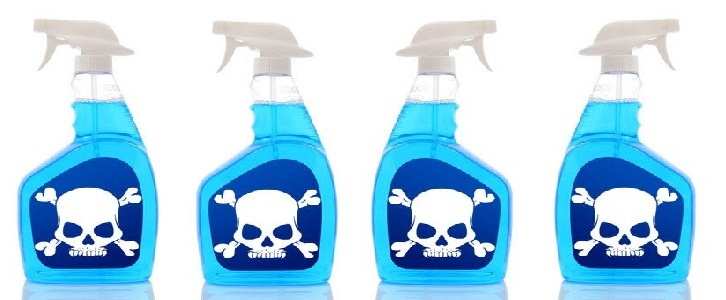
In this morning’s email I received two announcements. One showing progress on the toxics front and then other…what’s the correct word for “opposite of progress”?
Bad news first. The New York Times reported that the federal government is scaling back the way health and safety risks associated with the most dangerous chemicals on the market will be determined.
Under The Frank R, Lautenberg Chemical Safety for the 21st Century Act (signed into law in 2016), the E.P.A. was required for the first time to evaluate hundreds of potentially toxic chemicals and determine if they should face new restrictions, or even be removed from the market. The chemicals include many in everyday use, such as dry cleaning solvents, paint strippers, and substances used in health and beauty products like shampoos and cosmetics.”
“But as it moves forward reviewing the first batch of 10 chemicals the E.P.A. has in most cases decided to from its calculations any potential exposure caused by the substances’ presence in the air, the ground or water…Instead, the agency will focus on possible harm caused by direct contact with a chemical in the workplace or elsewhere.”
On the brighter side. the State of New York now has a Household Cleansing Product Information Disclosure Program, that requires manufacturers of cleaning products to post their product ingredients on Internet web sites by July 2019, with further details to be added by July 2020 and January 2023. Exceptions are allowed for trade secrets.
California already has a similar program SB-258 Cleaning Product Right to Know Act of 2017. This law requires known hazardous chemicals in home and commercial cleaning products to be listed on labels and online.
Manufacturers have until 2020 to disclose ingredients online and until 2021 to list them on labels.
While all of this study of chemicals and disclosure of toxic ingredients is good to do, in the meanwhile each of us can take action to choose products that are not made with these chemicals right now, today. The toxic-free products exist, we just need to choose them.
THE NEW YORK TIMES: The Chemical Industry Scores a Big Win at the EPA
TIMESUNION: Home cleaning products must reveal chemicals, potential health impacts to state
Freenote Cloth
 A classic menswear collection manufactured exclusively in the United States….We source the finest materials and demand the highest level of craftsmanship. Our inspiration comes from real American culture, its timeless style icons, and personal experiences growing up throughout the US of A. Every input of a Freenote garment is considered. We believe the hardware used on a pair of denim is of equal importance to the fabric itself. The sourcing experience is planned and detailed, searching for what we consider to be the best of the best. Our goal is to create quality clothing that is built to last. We want you to be proud of the clothes you wear.” All that said, check material descriptions as there are some blends as well as 100% cotton, Most notable to me is the denim, which is “Raw denim is denim in its purest form – unwashed, untreated and untouched. It is generally more rigid with a crisp look, clean design and durable structure. Raw denim allows the consumer to break in the denim with custom wear patterns and unique fade results.” Check out the “blueprint” item on the menu for information on materials.
A classic menswear collection manufactured exclusively in the United States….We source the finest materials and demand the highest level of craftsmanship. Our inspiration comes from real American culture, its timeless style icons, and personal experiences growing up throughout the US of A. Every input of a Freenote garment is considered. We believe the hardware used on a pair of denim is of equal importance to the fabric itself. The sourcing experience is planned and detailed, searching for what we consider to be the best of the best. Our goal is to create quality clothing that is built to last. We want you to be proud of the clothes you wear.” All that said, check material descriptions as there are some blends as well as 100% cotton, Most notable to me is the denim, which is “Raw denim is denim in its purest form – unwashed, untreated and untouched. It is generally more rigid with a crisp look, clean design and durable structure. Raw denim allows the consumer to break in the denim with custom wear patterns and unique fade results.” Check out the “blueprint” item on the menu for information on materials.
Alluvian
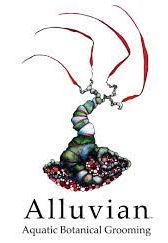 “Aquatic Botanical Grooming—an organic collection of handmade, seaweed infused products that will change the way you groom.” Bar soap, shaving soap, hair soap, alluvial clay, aftershave serum, and more. “Alluvian sources only certified organic and sustainably harvest ingredients throughout our entire product line. Our seaweed varieties are wild harvested off the pristine coast of Maine. Every product is formulated with plant-based oils responsibly sourced from around the world. Like a fine wine, our aromatics are chosen by specific region and distiller to offer our clients depth and a unique sensory experience. Some suppliers are listed. Plastic-free.
“Aquatic Botanical Grooming—an organic collection of handmade, seaweed infused products that will change the way you groom.” Bar soap, shaving soap, hair soap, alluvial clay, aftershave serum, and more. “Alluvian sources only certified organic and sustainably harvest ingredients throughout our entire product line. Our seaweed varieties are wild harvested off the pristine coast of Maine. Every product is formulated with plant-based oils responsibly sourced from around the world. Like a fine wine, our aromatics are chosen by specific region and distiller to offer our clients depth and a unique sensory experience. Some suppliers are listed. Plastic-free.
The Hobo Company
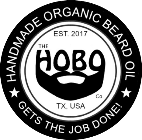 “Exclusive Handmade Organic Beard Oil crafted from the finest premium and organic ingredients.
“Exclusive Handmade Organic Beard Oil crafted from the finest premium and organic ingredients.
The HOBO Company Beard Oil is absolute top quality, Our Ingredients are Safe, natural, nothing hidden and with no nut oils. Our hand crafted Beard Oil consist of Premium Ingredient like Fractionated Coconut Oil (MCT), Golden Jojoba Oil, Hemp Seed Oil, Tea Tree Oil, Orange Bitter Oil and Peppermint Supreme Oils and are Made in the USA!”
Arthur for Men
 “Man sized organic lip balm…More than 3x the size of the average lip balm. Now instead of a bunch of little lip balms scattered everywhere, you can have one super effective, easy to keep track of jumbo sized lip balm.” Manly flavors too…orange, mint, and coffee. Made from certified organic ingredients.
“Man sized organic lip balm…More than 3x the size of the average lip balm. Now instead of a bunch of little lip balms scattered everywhere, you can have one super effective, easy to keep track of jumbo sized lip balm.” Manly flavors too…orange, mint, and coffee. Made from certified organic ingredients.







